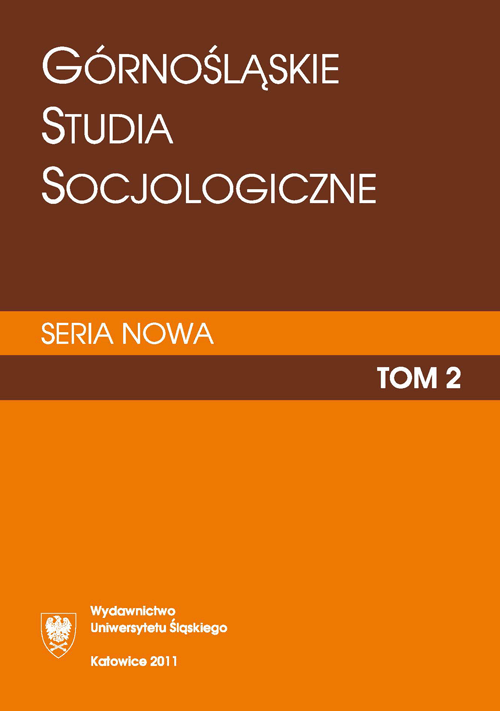Świat przedstawiony Górnego Śląska od (soc)realizmu do realizmu magicznego — reprezentacje symboliczne regionu w obrazach
Depictions of Upper Silesian world from socialist to magic realism — symbolic representation of the region in paintings
Author(s): Paweł Ćwikła, Krzysztof ŁęckiSubject(s): Social Sciences
Published by: Wydawnictwo Uniwersytetu Śląskiego
Keywords: transformation process; film; space; artistic activity
Summary/Abstract: This article is based on research made in the framework of the Seventh European Framework Programme SPHERE funded by the European Union. Polish group of researches is headed by prof. dr hab. Kazimiera Wódz. This work refers to a number of assumptions important for the part of the project devoted mainly to cultural identity expressed and experienced using narrative strategies. Cultural consequences of these transformation processes are also interesting for the artists. There are the plenty of artistic and cultural achievements and works, in which artists express their close relationship with the region. That’s because we decided to focus on just one segment of artistic activity in the present paper: on the way the artists create and reflect the pictures and imagines of the region. Individuality and cultural uniqueness of the region is perceived and promoted by movie directors despite (or perhaps because of) a dynamic change. The political and economic restructuring had an impact on the landscape of Silesian agglomeration and also on the minds of its inhabitants. However, always when the artists want to catch the cultural specificity in their films, they stress the values, habits, principles and beliefs which are used to show the region’s individuality. Here we have films began with the poetic of realism, and even socialist-realism. The most industrial developed region of the People’s Poland time, which was Upper Silesia, was the best to be shown as the arena of the conflict between the “new” and the “old”. Then the effects of the gradual deindustrialization and slow decay of the socialistic system, led to the evolutionary transition to poetic of so-called “magic realism”; from the Silesian series films by Kazimierz Kutz, through comedies (often talking about the past times) until contemporary films. What we can see here is a kind of symbolic escape from the dying word of ironfoudries and mines, to not really recognized yet the world of late modernity.
Journal: Górnośląskie Studia Socjologiczne. Seria Nowa
- Issue Year: 2011
- Issue No: 2
- Page Range: 113-127
- Page Count: 15
- Language: Polish

